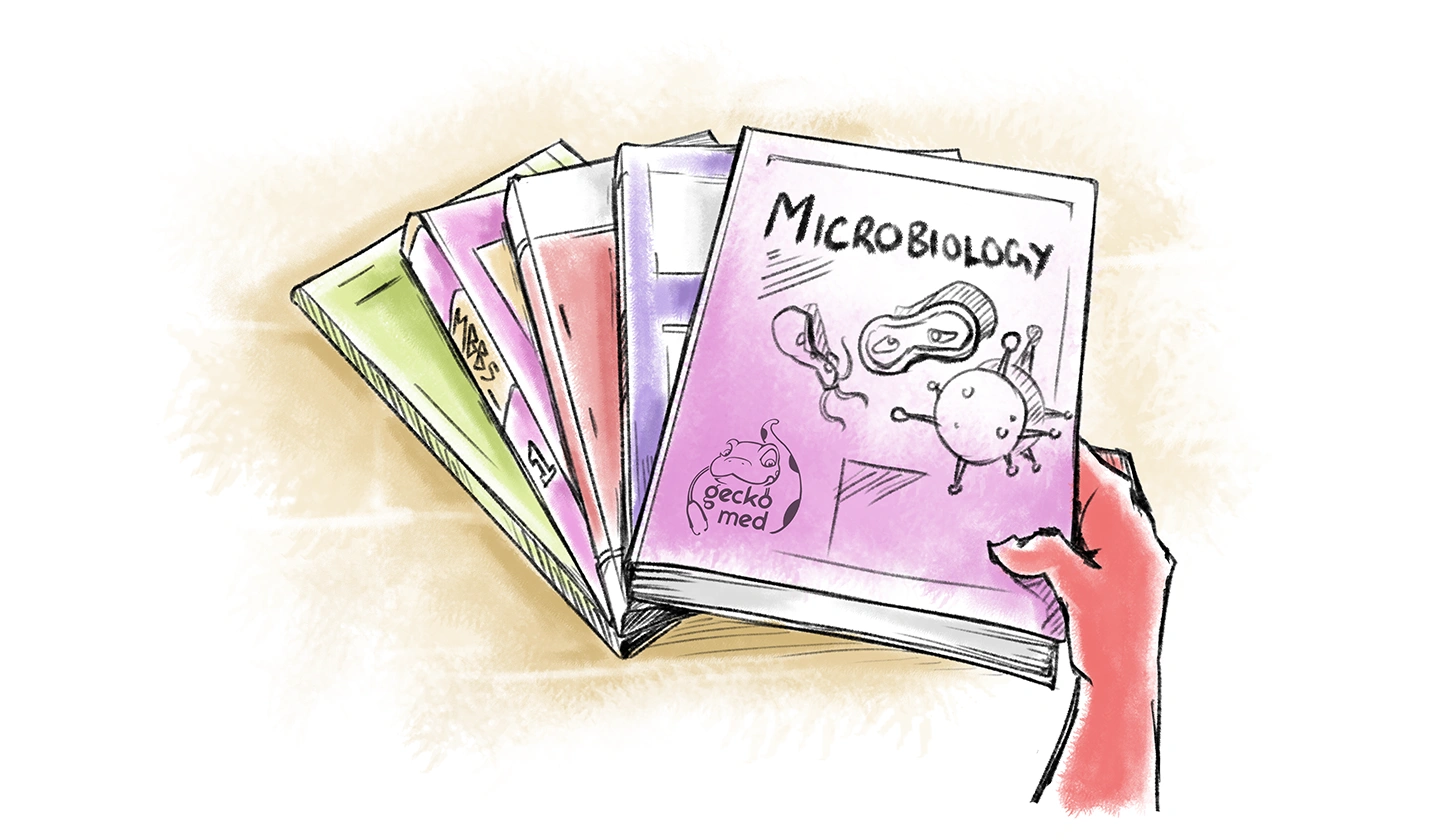Microbiology—the study of microscopic organisms like bacteria, viruses, fungi, and parasites—plays a critical role in medical education.
For MBBS students, understanding these tiny life forms is more than just an academic requirement; it’s essential for diagnosing, treating, and preventing infectious diseases.
This knowledge goes far beyond the classroom; it’s something that directly influences patient care and public health, shaping how doctors approach and manage infections.
This article aims to guide MBBS students in selecting the best microbiology books to support their studies. We’ve categorized them into two groups: essential foundational texts and more specialized resources.
In addition to book recommendations, we’ll provide practical tips on how to make the most of these resources, helping you build a strong microbiology foundation and enhancing your learning experience.
Microbiology Books for MBBS: Building a Strong Foundation
These books provide a comprehensive overview of microbiology, laying the groundwork for further specialized study:
1) Prescott’s Microbiology
Prescott’s Microbiology is a classic text renowned for its clarity, breadth, and clinical relevance.
It offers a detailed exploration of the microbial world, covering bacterial structure and function, microbial genetics, and the role of microorganisms in health and disease.
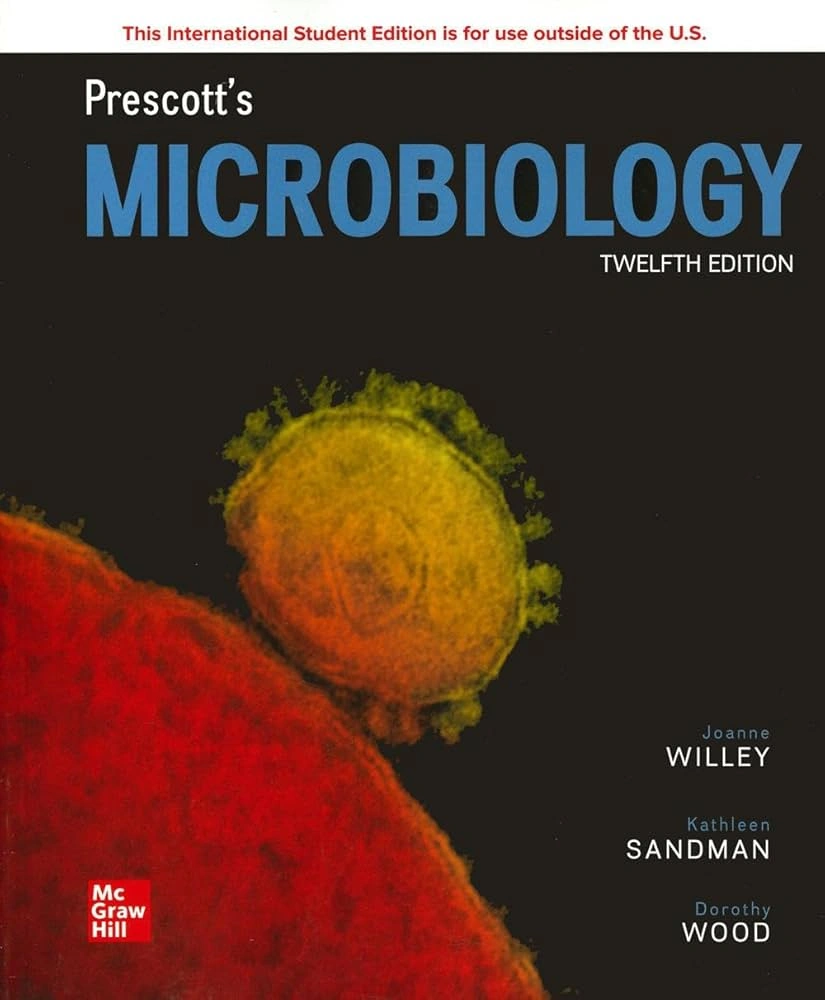
Key Features:
- Comprehensive Coverage: This book meticulously covers all fundamental concepts, from microbial metabolism and growth to host-microbe interactions and the principles of infection control.
- Clear Explanations: Complex topics are broken down into easily digestible pieces, making it suitable for students with varying levels of biological knowledge.
- Clinical Focus: Prescott’s Microbiology emphasizes the clinical applications of microbiology, with numerous case studies and examples illustrating the impact of microbes on human health.
- Up-to-date Information: New editions incorporate the latest research findings and advancements in microbiology, ensuring students are equipped with current knowledge.
- Online Resources: The book is often accompanied by online resources, including interactive tutorials, practice quizzes, and animations, to enhance learning and engagement.
- Target Audience: This book is ideal for first-year MBBS students who are beginning their journey into the world of microbiology. It caters to both beginners and those with some prior knowledge of biology.
2) Jawetz, Melnick & Adelberg’s Medical Microbiology
Jawetz, Melnick & Adelberg’s Medical Microbiology is a concise and clinically focused text that has been a staple in medical education for decades.
It provides a streamlined approach to understanding the essential aspects of medical microbiology, with a particular emphasis on infectious diseases.

Key Features:
- Clinical Emphasis: This book prioritizes the clinical aspects of microbiology, providing detailed information on the pathogenesis, diagnosis, and treatment of infectious diseases.
- Strong Immunology and Virology Sections: Jawetz offers in-depth coverage of immunology and virology, two critical areas for understanding microbial pathogenesis and host response.
- Concise Format: The book presents information in a clear and concise manner, making it an excellent resource for quick review and exam preparation.
- Updated Editions: Regular updates ensure that the book reflects the latest advancements in infectious disease management and microbiology research.
- Target Audience: This book is well-suited for MBBS students who are seeking a clinically oriented and concise text to complement their lectures and clinical rotations.
3) Lippincott Illustrated Reviews: Microbiology
Lippincott Illustrated Reviews: Microbiology is a visually engaging text designed for quick review and exam preparation.
It employs a wealth of diagrams, flowcharts, and illustrations to simplify complex microbiological concepts.

Key Features:
- Visual Learning: This book caters to visual learners by presenting information in a visually appealing and easily digestible format.
- Concise Summaries: Key concepts are summarized in bullet points and tables, facilitating quick review and retention.
- Clinical Correlations: Clinical vignettes and case studies help students connect basic microbiology principles to real-world clinical scenarios.
- Exam-Oriented Approach: The book’s format and content are specifically designed to help students prepare for microbiology exams.
- Target Audience: This book is an excellent choice for MBBS students who prefer visual learning and need a concise resource for exam preparation.
4) Review of Medical Microbiology and Immunology by Warren Levinson
Levinson’s Review of Medical Microbiology and Immunology is a concise and clinically oriented review book that presents complex topics in a simplified manner.
It focuses on the essential information that medical students need to know to understand infectious diseases and the immune response.
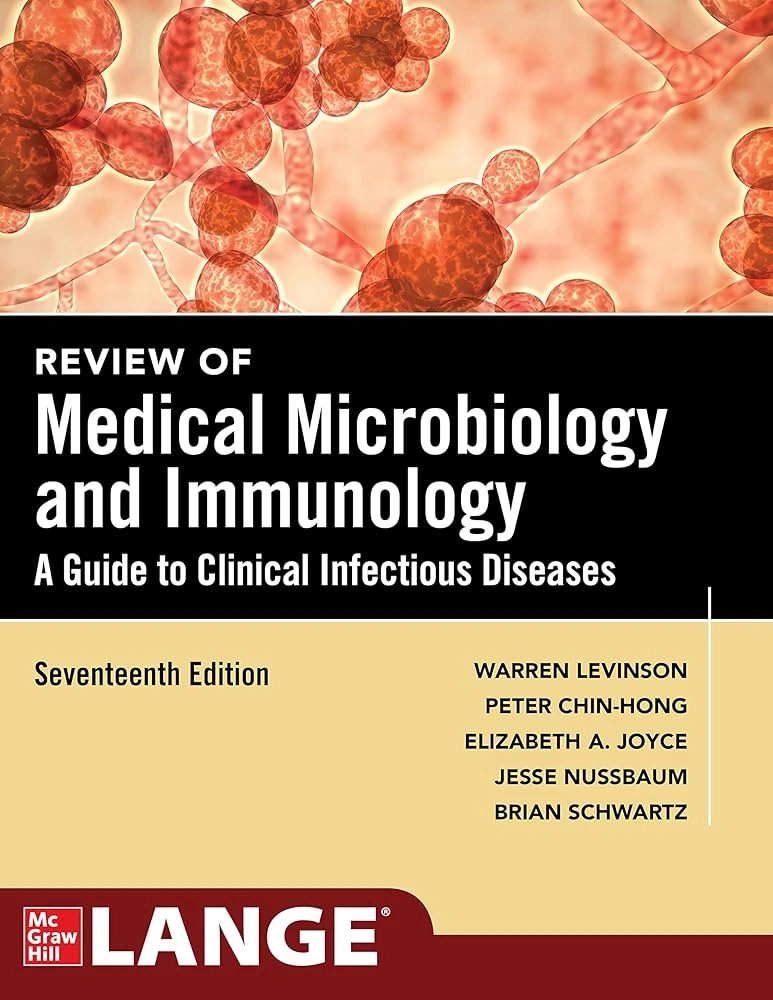
Key Features:
- Clinical Applications: This book emphasizes the clinical relevance of microbiology, with numerous examples of how microbial infections are diagnosed and treated.
- Simplified Approach: Complex concepts are explained in a clear and straightforward manner, making it accessible to students with varying levels of background knowledge.
- Concise Format: The book’s concise format makes it an ideal resource for quick review and reinforcement of key concepts.
- Case-Based Learning: Case studies and clinical vignettes throughout the book help students apply their knowledge to real-world scenarios.
- Target Audience: This book is a valuable resource for MBBS students who are looking for a concise and clinically focused review of microbiology and immunology.
5) Ananthanarayan and Paniker’s Textbook of Microbiology
Ananthanarayan and Paniker’s Textbook of Microbiology is a highly regarded textbook specifically tailored to the Indian medical curriculum.
It provides a comprehensive overview of microbiology, with a focus on the microorganisms and infectious diseases relevant to the Indian context.
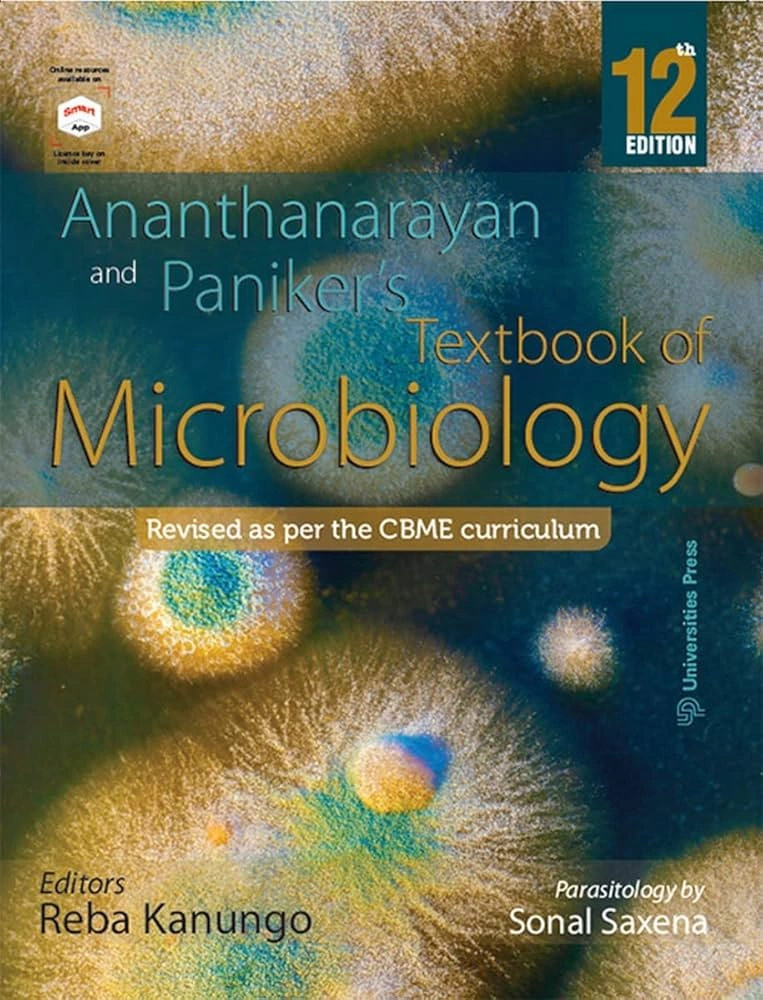
Key Features:
- Comprehensive Coverage: This book covers all major aspects of microbiology, including bacteriology, virology, mycology, and parasitology.
- Indian Context: The book emphasizes the microorganisms and infectious diseases that are prevalent in India, making it particularly relevant for Indian medical students.
- Clear and Concise Language: The book is written in a clear and concise style, making it accessible to students.
- Clinical Relevance: Clinical correlations and case studies are integrated throughout the text to highlight the practical applications of microbiology.
- Target Audience: This book is an essential resource for MBBS students in India, providing them with a comprehensive and relevant understanding of microbiology.
6) Clinical Microbiology made ridiculously simple by Mark. T Gladwin
Clinical Microbiology made ridiculously simple by Mark. T Gladwin is a highly acclaimed book known for its unique and engaging approach to learning microbiology. It uses humor, mnemonics, and clear explanations to make the subject more accessible and enjoyable.
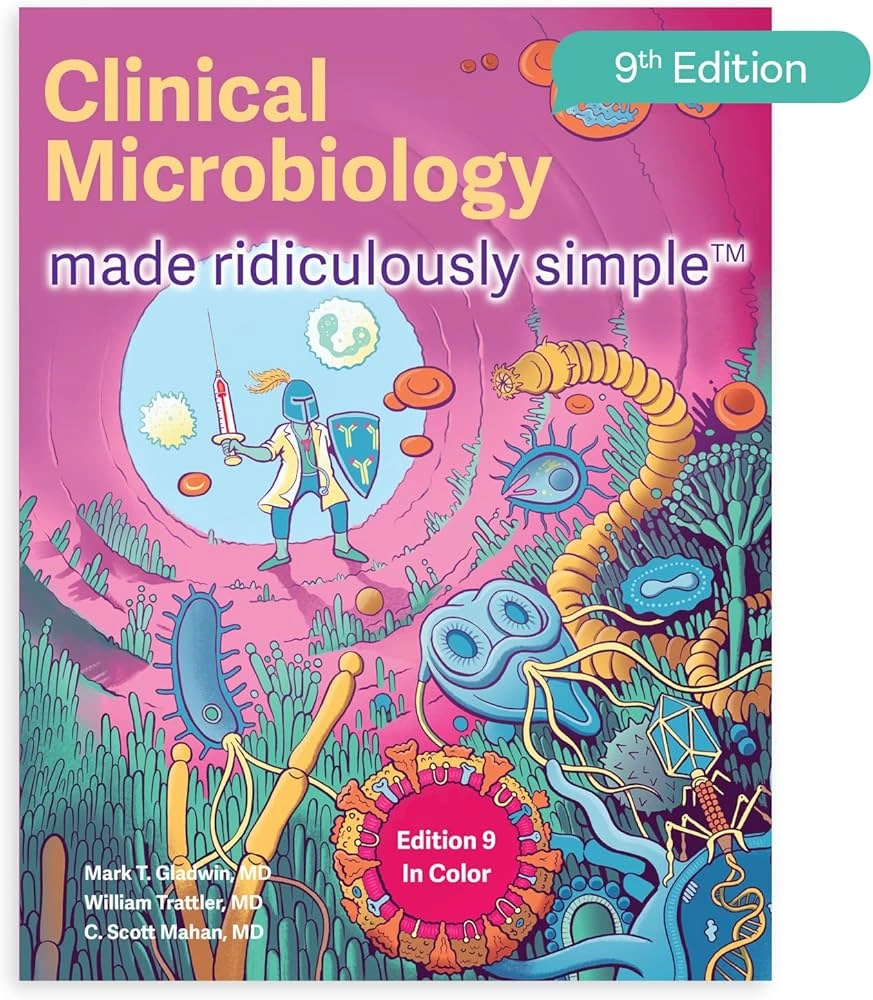
Key Features:
- Simple and Engaging: This book breaks down complex microbiology concepts into easily understandable pieces, using humor and mnemonics to aid memory.
- Focus on Clinical Relevance: It emphasizes the clinical applications of microbiology, helping students connect basic science to real-world medical scenarios.
- Concise and Clear: The book avoids unnecessary jargon and presents information in a concise and straightforward manner.
- Visually Appealing: Includes numerous diagrams, charts, and illustrations to enhance understanding.
- Excellent for Review: Its concise format and memorable approach make it a valuable tool for quick review and exam preparation.
- Target Audience: This book is particularly helpful for MBBS students who are struggling with microbiology or prefer a more engaging and less intimidating approach to learning the subject.
These books give you a good start in microbiology. Now let’s look at some books about specific areas in microbiology.
Microbiology Books for MBBS: Delving into Specialties
Beyond the foundational texts, specialized books delve deeper into specific areas of microbiology, providing in-depth knowledge and insights:
Clinical Microbiology
Clinical microbiology focuses on the laboratory diagnosis of infectious diseases.
It involves identifying the causative microorganisms and determining their susceptibility to antimicrobial agents.
1) Koneman’s Color Atlas and Textbook of Diagnostic Microbiology
Koneman’s Color Atlas and Textbook of Diagnostic Microbiology 1 is a comprehensive guide to the laboratory diagnosis of infectious diseases.
It combines detailed textual information with a wealth of color images and illustrations to aid in microbe identification.

Key Features:
- Visual Approach: This book utilizes numerous color photographs and illustrations to depict microbial morphology, staining characteristics, and culture appearances.
- Comprehensive Coverage: It covers all major aspects of diagnostic microbiology, including bacteriology, virology, mycology, and parasitology.
- Practical Guidance: Koneman’s provides practical guidance on specimen collection, processing, and interpretation of laboratory results.
- Updated Information: New editions incorporate the latest diagnostic techniques and advancements in microbial identification.
- Target Audience: This book is an invaluable resource for MBBS students, medical laboratory technologists, and clinicians involved in the diagnosis of infectious diseases.
2) Bailey & Scott’s Diagnostic Microbiology
Bailey & Scott’s Diagnostic Microbiology is another classic text in the field of clinical microbiology.
It offers comprehensive coverage of diagnostic techniques, with a strong emphasis on practical applications and real-world case studies.

Key Features:
- Detailed Procedures: This book provides step-by-step descriptions of laboratory procedures, including specimen collection, culture methods, and antimicrobial susceptibility testing.
- Case Studies: Numerous case studies illustrate the application of diagnostic microbiology principles in clinical settings.
- Quality Control: Bailey & Scott’s emphasizes the importance of quality control in the microbiology laboratory to ensure accurate and reliable results.
- Updated Information: New editions incorporate the latest advancements in diagnostic microbiology, including molecular methods and automation.
- Target Audience: This book is an essential resource for MBBS students, medical laboratory professionals, and clinicians involved in the diagnosis and management of infectious diseases.
Immunology
Immunology is the study of the immune system, a complex network of cells and molecules that protect the body from infection.
A strong understanding of immunology is crucial for understanding the pathogenesis of infectious diseases and the development of vaccines and immunotherapies.
1) Kuby Immunology
Kuby Immunology is a widely acclaimed textbook that provides a comprehensive and engaging introduction to the immune system.
It is known for its clear explanations, helpful illustrations, and clinical relevance.
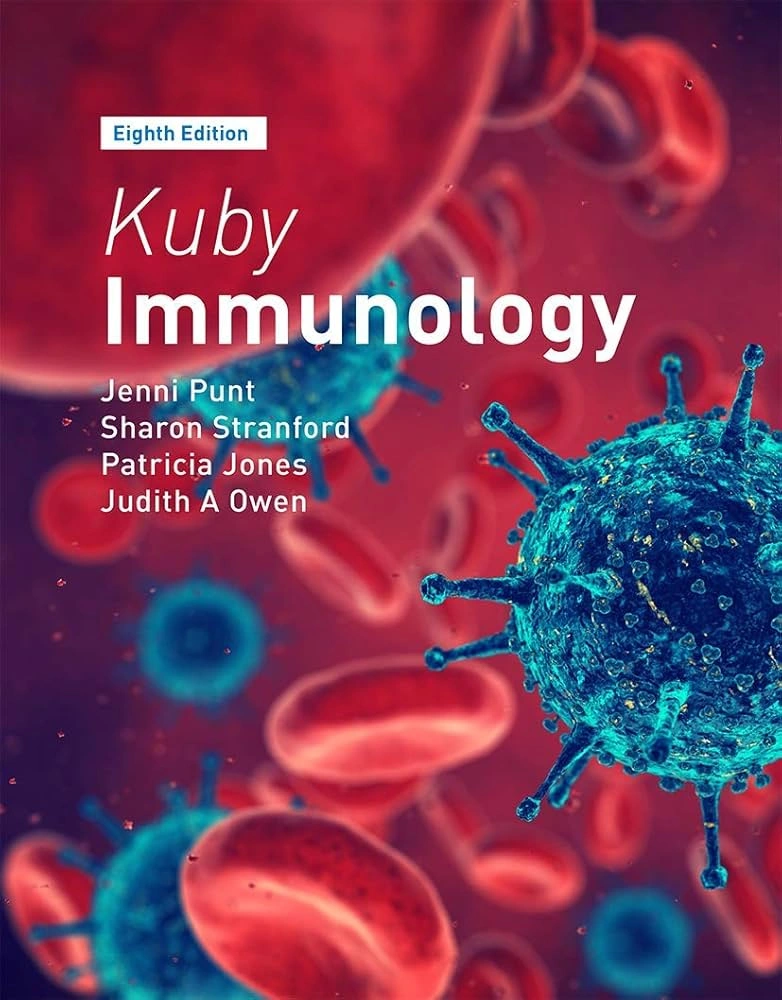
Key Features:
- Comprehensive Coverage: This book covers all major aspects of immunology, from innate immunity and adaptive immunity to immune deficiencies and hypersensitivity reactions.
- Clear Explanations: Complex immunological concepts are explained in a clear and concise manner, making it accessible to students with varying levels of background knowledge.
- Visual Aids: Kuby Immunology utilizes numerous illustrations, diagrams, and tables to enhance understanding and retention.
- Clinical Relevance: Clinical examples and case studies throughout the book illustrate the importance of immunology in human health and disease.
- Target Audience: This book is an excellent resource for MBBS students, graduate students, and researchers who are seeking a comprehensive and engaging introduction to immunology.
2) Cellular and Molecular Immunology by Abul K. Abbas
Cellular and Molecular Immunology by Abul K. Abbas delves into the intricate mechanisms of the immune system at the cellular and molecular levels.
It provides a detailed exploration of the cells, molecules, and signaling pathways involved in immune responses.

Key Features:
- In-depth Coverage: This book provides a detailed and comprehensive exploration of the cellular and molecular basis of immunity.
- Research Focus: It incorporates the latest research findings and advancements in immunology, making it relevant for students and researchers.
- Clinical Correlations: Clinical examples and case studies illustrate the implications of basic immunology principles for human health and disease.
- Visual Aids: Numerous illustrations, diagrams, and tables help students visualize and understand complex immunological processes.
- Target Audience: This book is an invaluable resource for MBBS students, graduate students, and researchers who are interested in the cellular and molecular mechanisms of immunity.
Virology
Virology is the study of viruses, submicroscopic infectious agents that replicate only inside the living cells of an organism.
Viruses cause a wide range of human diseases, from the common cold to HIV/AIDS.
Principles of Virology by S. Jane Flint
Principles of Virology by S. Jane Flint et al. is a comprehensive textbook that explores the fundamental principles of virology, covering viral structure, replication, pathogenesis, and evolution.
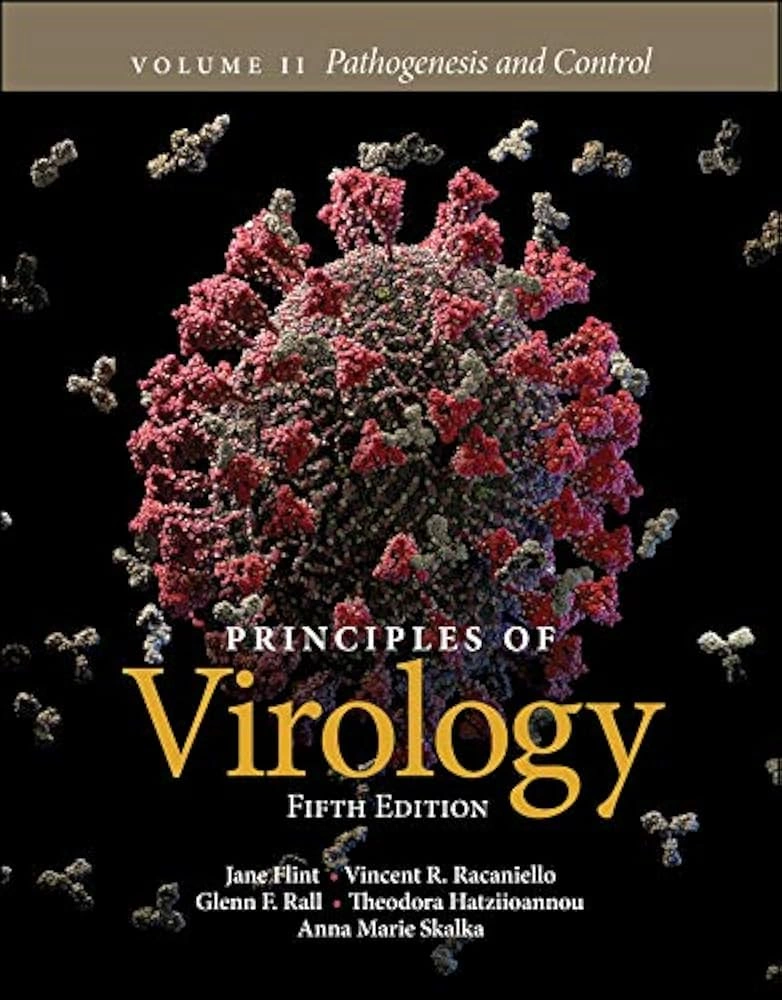
Key Features:
- Molecular Focus: This book emphasizes the molecular mechanisms of viral replication and pathogenesis, providing a deep understanding of how viruses interact with host cells.
- Comprehensive Coverage: It covers all major aspects of virology, including viral diversity, viral genetics, and antiviral therapy.
- Clinical Relevance: Clinical examples and case studies throughout the book illustrate the impact of viruses on human health.
- Updated Information: New editions incorporate the latest research findings and advancements in virology, including the emergence of new viruses and the development of antiviral therapies.
- Target Audience: This book is an essential resource for MBBS students, graduate students, and researchers who are seeking a comprehensive and in-depth understanding of virology.
Parasitology
Parasitology is the study of parasites, organisms that live on or in a host organism and get their food from or at the expense of its host.
Parasites cause a wide range of human diseases, particularly in tropical and subtropical regions.
Paniker’s Textbook of Medical Parasitology
Paniker’s Textbook of Medical Parasitology is a dedicated text that provides a comprehensive overview of parasites and parasitic diseases.
It is authored by an Indian expert in the field and is particularly relevant to the Indian context.
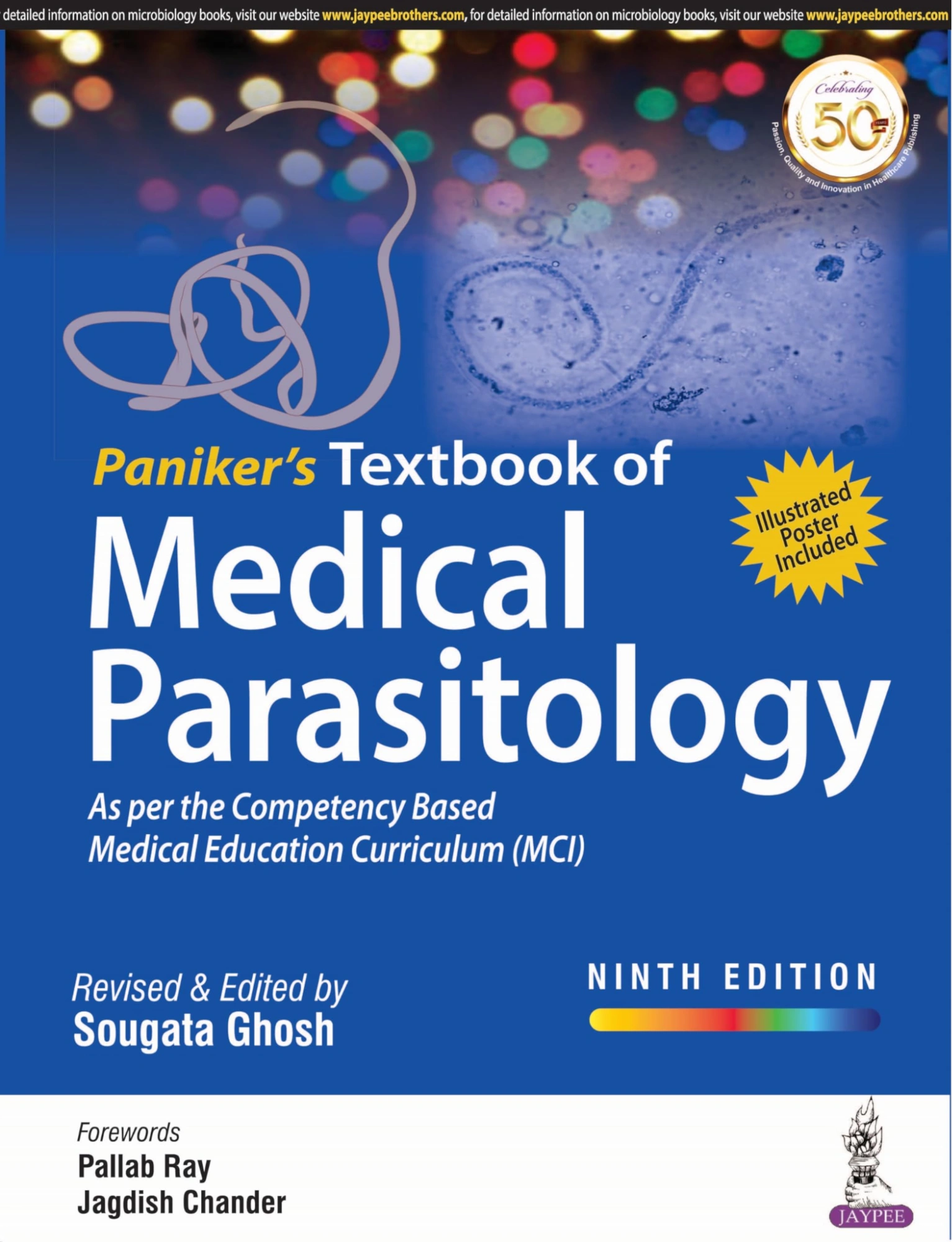
Key Features:
- Comprehensive Coverage: This book covers all major groups of human parasites, including protozoa, helminths, and arthropods.
- Clinical Focus: It emphasizes the clinical manifestations, diagnosis, and treatment of parasitic diseases.
- Indian Context: The book highlights the parasites and parasitic diseases that are prevalent in India, making it particularly relevant for Indian medical students.
- Illustrations and Images: Numerous illustrations and images aid in the identification and understanding of parasites.
- Target Audience: This book is an essential resource for MBBS students, clinicians, and public health professionals who are involved in the diagnosis, treatment, and prevention of parasitic diseases.
It is important to pick the right books. You also need to use them well. Let’s see how you can do that.
Tips for Choosing and Using Microbiology Books Effectively
Selecting the right microbiology books and using them effectively can significantly enhance your learning experience. Here are some practical tips to guide you:
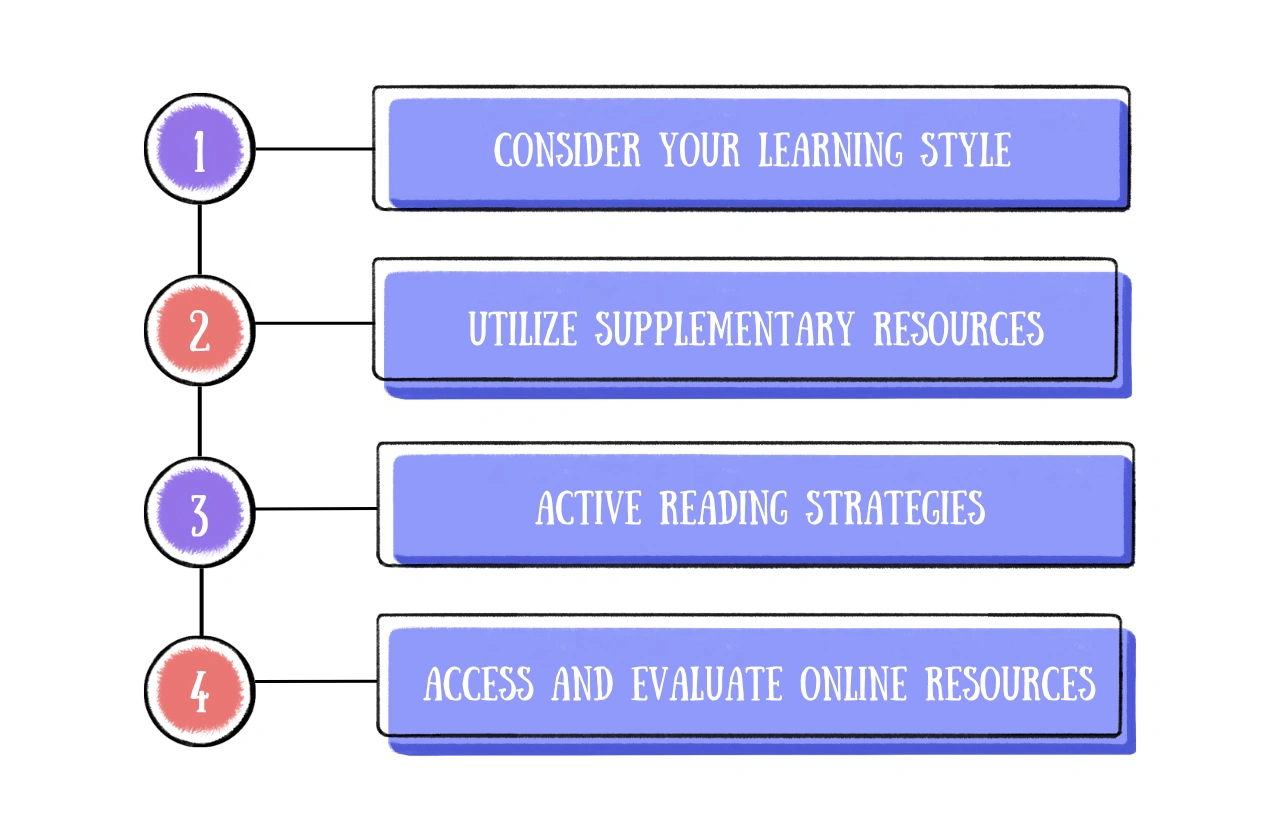
1) Consider Your Learning Style
- Visual Learners: If you learn best through visual aids, prioritize books with diagrams, illustrations, and photographs. Lippincott Illustrated Reviews: Microbiology and Koneman’s Color Atlas and Textbook of Diagnostic Microbiology are excellent choices.
- Concise Information: If you prefer concise and to-the-point information, opt for review books like Jawetz, Melnick & Adelberg’s Medical Microbiology or Levinson’s Review of Medical Microbiology and Immunology.
- Detailed Explanations: If you thrive on in-depth explanations and comprehensive coverage, choose textbooks like Prescott’s Microbiology or Kuby Immunology.
2) Utilize Supplementary Resources
Textbooks are valuable resources, but they should be complemented with other learning materials to enhance your understanding and engagement.
- Online Resources: Many textbooks offer online resources, such as interactive tutorials, practice quizzes, and animations. Utilize these resources to reinforce your learning and test your knowledge.
- Atlases: Atlases like Koneman’s Color Atlas and Textbook of Diagnostic Microbiology provide visual aids for identifying microorganisms.
- Laboratory Experiences: Practical laboratory experiences are crucial for developing your skills in microbial identification and handling.
3) Active Reading Strategies
Passive reading is not an effective way to learn microbiology. Employ active reading strategies to engage with the material and enhance your comprehension and retention.
- Note-Taking: Take detailed notes while reading, summarizing key concepts and highlighting important information.
- Concept Mapping: Create concept maps to visualize the relationships between different microbiological concepts.
- Flashcards: Use flashcards to memorize important terms, definitions, and facts.
- Teach the Material: Teaching the material to others is an excellent way to reinforce your understanding and identify areas where you need further review.
- Self-Testing: Regularly test yourself using practice quizzes and questions to assess your knowledge and identify areas for improvement.
4) Access and Evaluate Online Resources
The internet offers a wealth of information on microbiology, but it is important to critically evaluate the credibility of online sources.
Prioritize websites from reputable organizations, such as the WHO, the Centers for Disease Control and Prevention (CDC), and university websites.
Conclusion
Microbiology is a very important subject for medical students. You need to have a strong understanding of microbiology to be a good doctor.
There are many different microbiology books available. Choose books that fit your learning style and the curriculum you are following.
Remember to use the latest editions and combine textbooks with other resources. Active reading strategies will help you learn and remember the information.

